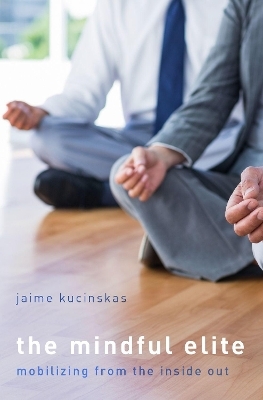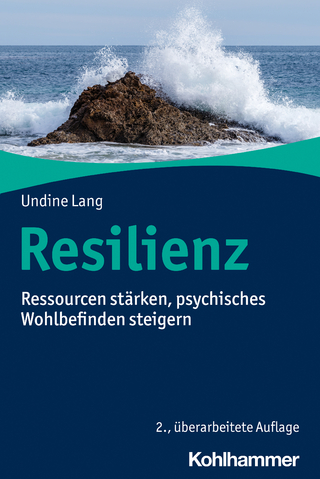
The Mindful Elite
Mobilizing from the Inside Out
Seiten
2019
Oxford University Press Inc (Verlag)
978-0-19-088181-8 (ISBN)
Oxford University Press Inc (Verlag)
978-0-19-088181-8 (ISBN)
The Mindful Elite delves into the elite foundation of the mindfulness movement, showing how its leaders' choices to spread meditation through elite networks both facilitated the rapid rise of mindful meditation, and undermined meditators' intentions to transform society from the cushion.
Mindful meditation is now embraced in virtually all corners of society today, from K-12 schools to Fortune 100 companies, and its virtues extolled by national and international media almost daily. It is thought to benefit our health and overall well-being, to counter stress, to help children pay attention, and to foster creativity, productivity and emotional intelligence. Yet in the 1960s and 1970s meditation was viewed as a marginal, counter-cultural practice, or a religious ritual for Asian immigrants. How did mindfulness become mainstream?
In The Mindful Elite, Jamie Kucinskas reveals who is behind the mindfulness movement, and the engine they built to propel mindfulness into public consciousness. Drawing on over a hundred first-hand accounts with top scientists, religious leaders, educators, business people and investors, Kucinskas shows how this highly accomplished, affluent group in America transformed meditation into an appealing set of contemplative practices. Rather than relying on confrontation and protest to make their mark and improve society, the contemplatives sought a cultural revolution by building elite networks and advocating the benefits of meditation across professions. Yet, spreading the Dharma far and wide came with unintended consequences and this idealistic myopia came to reinforce some of the problems it originally aspired to solve.
A critical look at this Buddhist-inspired movement, The Mindful Elite explores how elite movements can spread and draws larger lessons for other social, cultural, and religious movements across institutions and organizations.
Mindful meditation is now embraced in virtually all corners of society today, from K-12 schools to Fortune 100 companies, and its virtues extolled by national and international media almost daily. It is thought to benefit our health and overall well-being, to counter stress, to help children pay attention, and to foster creativity, productivity and emotional intelligence. Yet in the 1960s and 1970s meditation was viewed as a marginal, counter-cultural practice, or a religious ritual for Asian immigrants. How did mindfulness become mainstream?
In The Mindful Elite, Jamie Kucinskas reveals who is behind the mindfulness movement, and the engine they built to propel mindfulness into public consciousness. Drawing on over a hundred first-hand accounts with top scientists, religious leaders, educators, business people and investors, Kucinskas shows how this highly accomplished, affluent group in America transformed meditation into an appealing set of contemplative practices. Rather than relying on confrontation and protest to make their mark and improve society, the contemplatives sought a cultural revolution by building elite networks and advocating the benefits of meditation across professions. Yet, spreading the Dharma far and wide came with unintended consequences and this idealistic myopia came to reinforce some of the problems it originally aspired to solve.
A critical look at this Buddhist-inspired movement, The Mindful Elite explores how elite movements can spread and draws larger lessons for other social, cultural, and religious movements across institutions and organizations.
Jaime Kucinskas is Assistant Professor of Sociology at Hamilton College. Her research focuses on spirituality, social change, and inequality.
Part I: An Introduction to the Mindful Elite
1. The Contemplative Elite & Capitalism: A Case of Contradictions, Successes and Shortcomings
2. A Brief History of Buddhist-Inspired American Spirituality, 1830s-1970s
3. The Contemplatives (1979- )
Part II: Mobilizing Meditation through Consensus-Based Strategies
4. Accessing Institutions
5. Making Mindfulness Appealing
6. Interventions' Transformation from the Inside Out
7. The Elite Circuit
Part III: Assessing the Contemplatives' Success, 2013-2016
8. Collective Authenticity
9. In Conclusion
References
Appendix: Data Collection and Analysis
Endnotes
| Erscheinungsdatum | 23.11.2018 |
|---|---|
| Zusatzinfo | 5 line drawings |
| Verlagsort | New York |
| Sprache | englisch |
| Maße | 163 x 236 mm |
| Gewicht | 431 g |
| Themenwelt | Sachbuch/Ratgeber ► Gesundheit / Leben / Psychologie ► Lebenshilfe / Lebensführung |
| Geisteswissenschaften ► Religion / Theologie ► Buddhismus | |
| Sozialwissenschaften ► Soziologie | |
| ISBN-10 | 0-19-088181-X / 019088181X |
| ISBN-13 | 978-0-19-088181-8 / 9780190881818 |
| Zustand | Neuware |
| Haben Sie eine Frage zum Produkt? |
Mehr entdecken
aus dem Bereich
aus dem Bereich
die Prämenstruelle Dysphorische Störung als schwerste Form des PMS
Buch | Softcover (2023)
Kohlhammer (Verlag)
29,00 €
Ressourcen stärken, psychisches Wohlbefinden steigern
Buch | Softcover (2023)
Kohlhammer (Verlag)
36,00 €
das Stresskompetenz-Buch: Stress erkennen, verstehen, bewältigen
Buch | Softcover (2023)
Springer (Verlag)
19,99 €


